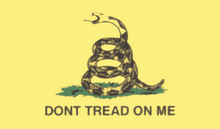There's a room where the light won't find you
Holding hands while the walls come tumbling down
When they do, I'll be right behind you
--Tears for Fears
Since the beginning of the pandemic, reasoned minds worldwide have been disturbed by how events have unfolded, and by the illogical nature of policy response. Personally, I theorized about an initially random but increasingly organized movement among various factions to advance their interests as authoritarians inevitably perceive that crisis presents opportunity.
Here is an alternative theory proposed by a German analyst. I am going to list key aspects of his theory below.
The pandemic and associated events over the past 18 months were not random or accidental but planned.
The master planners consist of a complex of large IT companies (discretionary power over huge data pool), global asset managers (raw financial power), and various policymakers (state power).
This is a plan hatched out of desperation to combat threats to the complex that have been many years in the making.
The central threat to the complex stems from increasingly futile efforts of central bankers to inflate money supplies through evermore credit creation. With interest rates now effectively at the 'zero bound' since the 2008 credit collapse, the complex have lost the primary tool for advancing (read: funding) their interests.
Because driving interest rates negative to keep the wheels on the wagon would be socially unacceptable to the people at large, the complex requires a strategy that people would accept. Their solution: create a new system using a veil of economic and social chaos.
The system involves digital currency controlled by central banking authority. No more paper money. All money would be digital. Such a system provides power over money creation, surveillance over all monetary transactions; control over what money can purchase; where and with whom money can be spent, and the times that govern purchase; power to set and collect taxes; the power to impose fines; ability to distribute funds to whomever is deemed worthy.
Such a system is seen by the complex as necessary to keep their interests (both economic and social) alive.
Under 'normal' conditions, the disenfranchisement that such a system would create would make it subject to huge pushback by the general populace.
Therefore, under the textbook authoritarian assumption about the crisis-opportunity relationship, the complex has determined that the most likely way that their the new system can be implemented is by a premeditated series of events that create economic and social chaos.
Enter CV19. Years of prior discussion and scenario planning informed the complex that a health crisis presented the best opportunity for creating fear and submission necessary for widespread acceptance of the new digital control system. Beginning late 2019, the complex began to implement the plan.
The plan's essence has been to implement policy responses to the pandemic that disturb economic and social fabrics in a manner that gradually escalates to the point of rupture. When the system collapses, people will beg for a policy solution like the digital currency and control system.
The author is careful to note influential role of the World Economic Forum (WEF) in the complex's preparation and execution of the plan. The WEF has 'trained' nearly all leaders of the complex, and has populated the ranks with thousands more like minds set on the goal of premeditated destruction.
On an optimistic note, the author suggests that the complex's plan is destined to fail. The 'deadly virus' narrative is already collapsing, leading to increasingly illogical arguments for pandemic countermeasures that even half wits are waking up to. Protests and pushback are growing.
Put differently, the complex's plan depends on chronic ignorance among a great majority of the world's people. But in order to advance its plan, the complex must resort to increasingly absurd measures certain to alert multitudes to the crimes being committed.
Truth will win. Evil will lose.


















![[Most Recent Quotes from www.kitco.com]](http://www.kitconet.com/charts/metals/gold/t24_au_en_usoz_2.gif)


